The dingos of Fraser Island aren’t the only stars.
The sand is moving. Tonnes of it are constantly shifting inland swept along by relentless winds. There’s no vegetation to be seen on the Stonetool Sand Blow. Like a silica glacier from another planet, it’s an inspirational vista that Frank Herbert may have had in mind when he created the planet Arrakis for his classic science fiction novel ‘Dune’. No human footprints either. This sand blow stretches from Fraser Island’s eastern shore for at least a kilometre. From my vantage point one hundred or so metres abo ve, it resembles a wide river of sun-dappled gold fringed by olivine paperbark forest. My eyes are drawn to its inexorable motion.
Then a March fly bites my bare calf. It hurts. I’m reminded of other bushwalks I’ve had around Australia, becoming caught up in a rapturous moment and then reality intrudes sharply. The fly digs in using her ‘two blade-like mouthparts that are used to pierce and slash skin’. According to the Department of Medical Entomology, it’s a member of the Tabanid, or ‘Biting Flies’ family. Female March flies need blood in order to reproduce. I slap it hard. March fly bites the dust.
It’s my first day on Fraser Island and I’m spending it with Kingfisher Resort and Village’s Head Ranger, Bec Whyte, a.k.a. ‘Ranga’. Whyte is an ex-Australian Zoo keeper and all-round expert on the local ecology, geology and history. I’m fortunate to have landed in a solo impromptu ranger class with her. If bitten by anything else I’m in capable hands in case medical attention is needed. Suddenly my Ranga Whyte swings into what I call ‘Gung-ho ranger mode’. She picks up the fly and holds it firmly around its thorax. Gently squeezing its tiny corpse she tells me to look at the miniscule drop of transparent liquid that extrudes from the fly’s bottom. ‘It’s very sweet, like nectar. They’re nectar feeders until they need blood to reproduce. You can suck it and see. The Aborigines sucked this for pure energy, like honey.’ I peer closely at the transparent drop of sweet fly juice and wonder whether or not to lick it, considering that if I don’t I might be perceived as being a wimp. ‘It’s only a fly, right?’ I say hesitantly.
I admit that I like the idea of sucking the juice from a fly that just tried to suck the juice out of me so I’m tempted. But the liquid suddenly turns a yellowish colour. ‘Oops, looks like she’s fed on something else. You won’t want to taste it now, pretty bloody awful and really bitter. I squeezed it too hard,’ Whyte says while she flicks the fly off her finger. My admiration for her expands instantly; here’s someone who learns from experience. Eating flies in the line of duty is part of Fraser Island’s ranger training’s inherent allure I suppose. I once ate a plate of crispy Chinese scorpions which went nicely with dried white rice and in West Africa I’ve enjoyed termites deep-fried in fresh peanut oil. Witchetty grubs are wholesomely nutritious and I’ve eaten dried Mopani worms in the Kalahari Desert, all part of my job but March fly bottom liquid is a new experience for me. I’ll just have to wait for another one to land on me.
‘Gotta go. We’re going to miss the tide,’ Whyte peremptorily announces, altering my intention to wait for another fly attack. Instead we’re heading to Eli Creek, some 20 kilometres further north on talcum powder fine sandy tracks. ‘Don’t want to miss Eli Creek, it’s a nice spot.’ She adds as we hurry back to our 4WD Land Cruiser and more ups and downs on deeply rutted paths.
Kingfisher Resort’s rangers have taken to naming notoriously difficult sections of frequently used track in smart-alecky fashion. I like their sense of humour, chins up in the face of difficult conditions. Claiming that we were bogged in the Pit of Despair infers an ineffably greater challenge than merely admitting to being stuck in the deep mushy sand near Central Station, the historic and now deserted logging camp that once served as the island’s main village.
Had I been driving we would have stuck permanently at Humpty Dumpty Roller Coaster just outside the dingo fence surrounding Kingfisher Resort itself, not five minutes after leaving the lobby’s driveway.
When Fraser Island’s worm-resistant Swamp Mahogany Eucalypt was shipped across the Great Sandy Strait to Maryborough then on to ports around the world, it was favoured over all other timber. Tiny Central Station was an important link in the world’s chain of global industry. Now it’s a popular destination for visitors interested in Fraser Island’s industrial history, an important reminder of how our contemporary views of the preservation of rare places have changed since Fraser Island was given World Heritage listing in 1992. It’s also ‘Bog Central’ where two of the island’s main tracks intersect.
The other challenging track, the longest in fact at 126 kilometres, is the great expanse of wide beach that forms the island’s windward side. Many visitors to Fraser Island, a number estimated to reach 300,000 annually by the end of 2010, misjudge the speed of the changing tides and often find themselves buried to their axles as waves begin to wash against the vehicle’s doors. The beach is something of a highway, a contentious situation that pits 4 WD off-road enthusiasts against serious environmentalists in an argument as to whether or not the continual transit of large vehicles across the sand is harmful to invertebrate life and nesting shore birds. While I was visiting Fraser Island I heard discussions about the future possibility of restricting visitor access by capping numbers, as many national parks do throughout the world. However in Queensland, where ecological purity often takes a backseat to recreational pursuits, this may prove to be a hot topic for years to come.
At Eli Creek a lone dingo wanders close by. It’s scavenging for food scraps left over from other travellers to this beauty spot. The clear fresh water empties into the ocean from its headwaters a couple of kilometres inland. Fraser Island’s streams flow over sandy bottoms, silent and eerily different from babbling brooks where water rushes over rocks. The dingo is as quiet as the water, rambling across the sand, checking out us humans while intent on discovering something tasty to eat. I’m informed that there are approximately 250 dingos living here, the only pure bred strain in all of eastern Australia, the top predator and very much a symbol of Fraser Island.
‘When people learn to leave them alone and not try to feed them, our work will be made easier’, Whyte puts the facts simply. For now it’s a learning exercise for the dingos and humans to disassociate food from one another. Though this dingo looks harmless, as if it could sit at my feet and happily wait for a scratch behind its ears, appearances are deceiving. It’s a wild animal intent on finding food in an environment where it’s difficult to find. The ecology here prevents grazing animals from foraging; the ground is vegetated with bracken fern and paperbark trees. No koalas, no wombats and no emus.
There are no kangaroos either on Fraser Island. Though a very small population of swamp wallabies has been found on the island’s northernmost tip, there aren’t enough for dingos to prey on. Instead dingos survive through their incredibly resourceful instincts, taking advantage of all opportunities and remembering where food has been or is available. Unfortunately for the dingos, humans on holiday focus much of their time on food. They leave behind fishing scraps, camping scraps and barbecue scraps, inadvertently providing prime dingo snacking opportunities. Though most people now understand that hand-feeding a dingo potentially invites disaster, some persist in treating them as if they were Snoopy. The education process continues.
At nearly 200,000 hectares, Fraser Island is a huge sandbox like playground for keen environmentalists or eco-tourists. While its terrestrial attractions are undoubtedly remarkable, its surrounding waters are equally compelling. The whale-watching waters of Hervey Bay notwithstanding, the shoals in Great Sandy Strait also attract rays, dolphins and dugongs. I’ve never seen a dugong in the wild and am very keen to spot one. I join a small group on the 9 metre catamaran ‘Shayla’ for a day’s sail into the Strait. We motor into the prevailing wind for a few kilometres. Two sea eagles soar overhead while returning to their nest on Duck Island. We turn south mid-way up Fraser Island’s western shore and hoist sails.
I sit on the right bow and let my feet dangle into the water as we bounce along in the chop. If there are dugongs about, I won’t miss seeing one from this spot. A large fish jumps a short distance away. The skipper says it’s a tuna but I’m not sure. In a second it was gone. We skirt Duck Island where the sea eagle nest is clearly visible occupying the top branches of a large ti tree. It’s an excellent fish viewing position. We sail for a couple of hours then moor near the old wharf once used to load the mahogany logs that were hauled overland from Central Station, some ten kilometres away. Swimming around the pylons I try to imagine how difficult a task this would have been, back-breaking and laborious. Floating in the pristine water I keep my eyes open for dugongs but these shy animals aren’t making an appearance today. Next time perhaps…
Back on land in one of Kingfisher Resort’s cafes I have a coffee with another ranger, Peter Meyer. Meyer combines his ranger duties with professional photography, using his free time to wander the island’s remote places. Meyer has been where few have been before, visited the most inaccessible sand blows and rainforests. This is the only place in the world where rainforests grow in sand. He tells me a story about a dingo and his boot. Having left his boots outside his tent one night, he discovered that one was missing the next morning. He tracked the culprit, a dingo, for a few hours. Finally he found his boot. Six dingo pups were playing with it in the middle of an old logging track. Meyer believes that he is the first human they’ve ever seen. ‘They looked at me for a few seconds then ran. The mother obviously carried it all the way back to them. The boot was fine. Only the inner sole was missing,’ he describes the encounter with glee. The pups were so surprised that for a moment, they stood absolutely still looking at him. Unfortunately his camera was in his tent. ‘That was too bad really but you can’t be prepared all of the time.’ From a ranger, this is refreshingly realistic.
- Dingo pup near Kingfisher Resort.
Meyer’s photos take pride of place in Kingfisher Resort’s lobby. His book is on sale too. I look through it, simply entitled ‘Fraser Island, Australia’. It’s a collection of his photos and descriptive prose. In it I find this quote, ‘Emotion without knowledge is the mother of all sentimentality,’ by the Australian artist Grace Cossington Smith.
Cossington Smith’s words echo in my mind when I think of Fraser Island, a unique island of sand I find highly emotionally charged. It behaves like a shape-shifting anomaly in our natural world, fickle, unpredictable and yet, constantly wonderful to those who take the time to appreciate it.
Naked Facts:
Getting there:
Kingfisher Resort and Village is accessible via fast cat ferry from Urangan Boat Harbour near Hervey Bay. Alternatively, vehicular ferries depart from both River Heads and Inskip Point. Jetstar, Virgin and Qantas Link operate direct flights to Hervey Bay. Kingfisher Resort and Village can arrange transport to and from the mainland.
Staying there:
Kingfisher Resort and Village offers the island’s largest accommodation range in its: 41/2 star resort rooms and suites, self-contained cottages and a hostel. See www.kingfisherbay.com for the latest deals and rates.
Tel: +61 (0)7 4120 3333

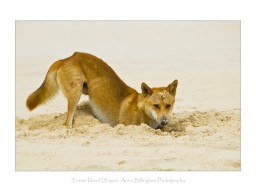
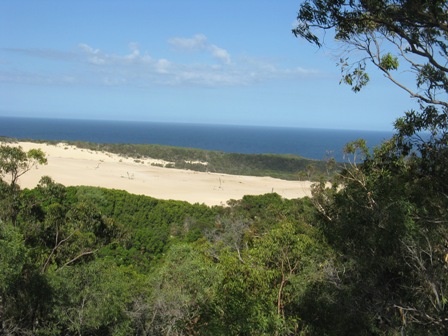
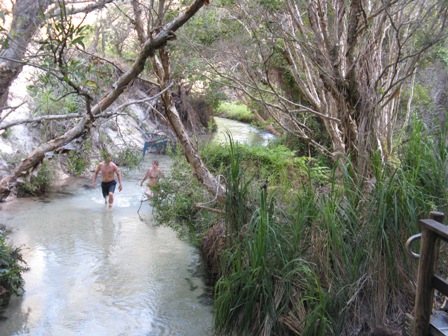
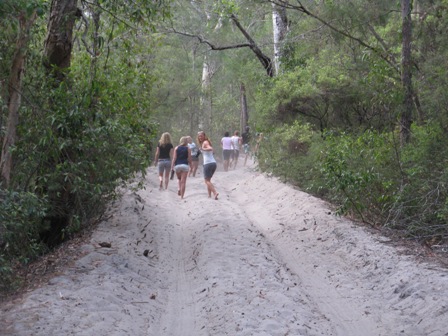
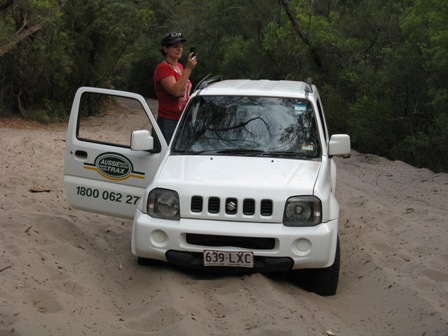
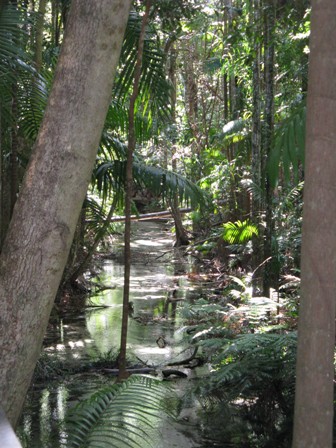
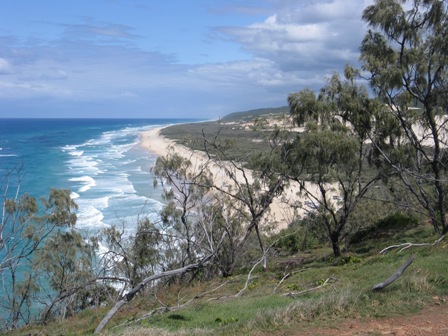
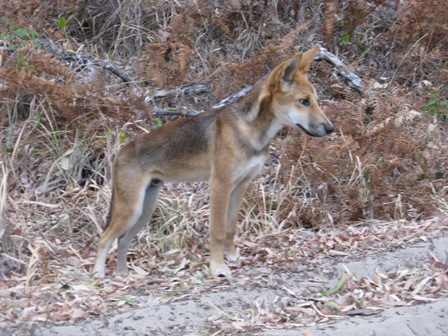
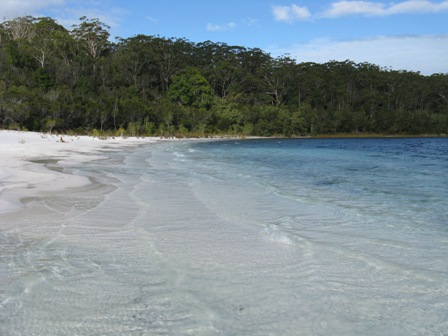
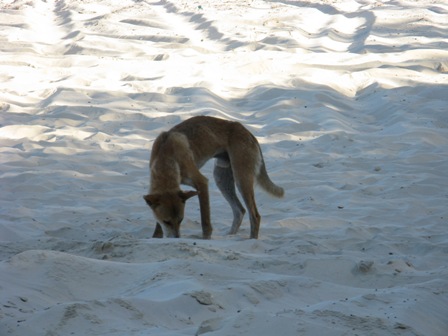
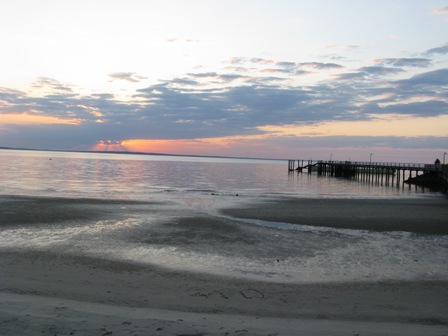
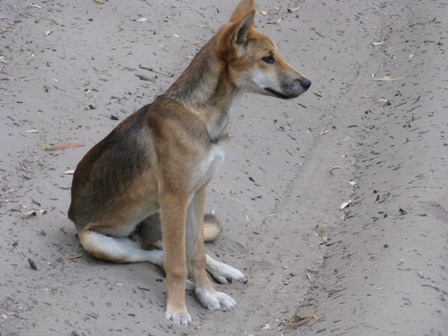
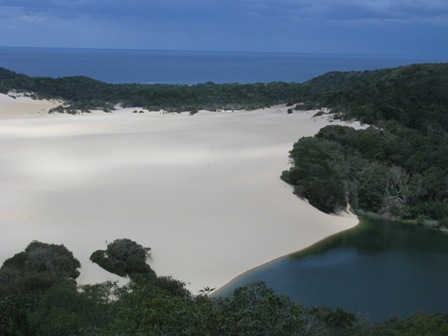
You were tempted to suck a fly. I hardly know where to start…nice piece!
Thanks Global Goddess. While sucking flies isn’t a career change, it’s all part of the job.